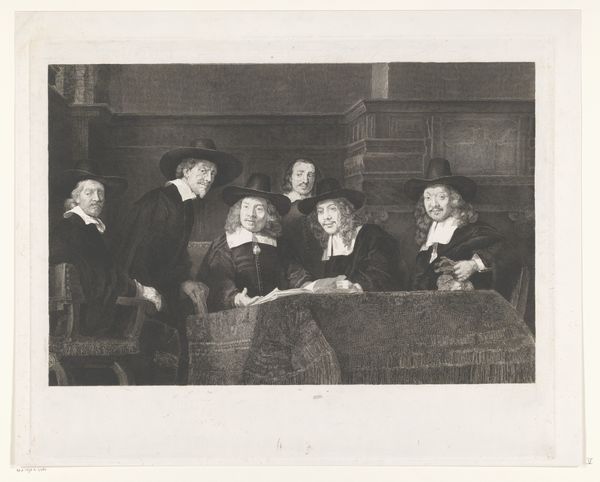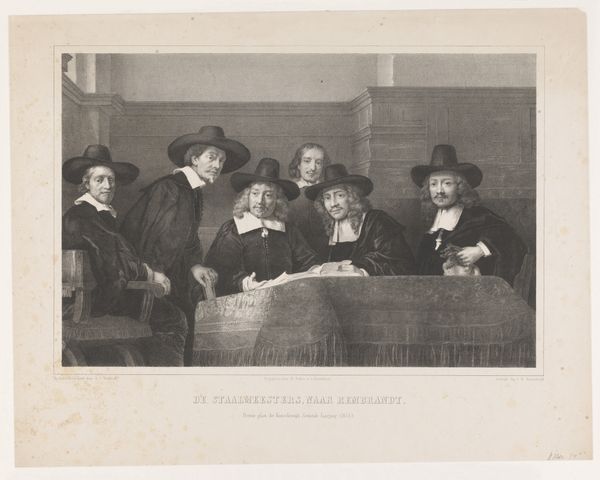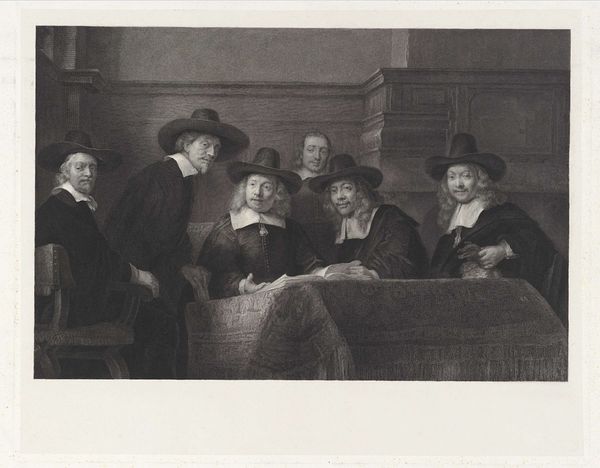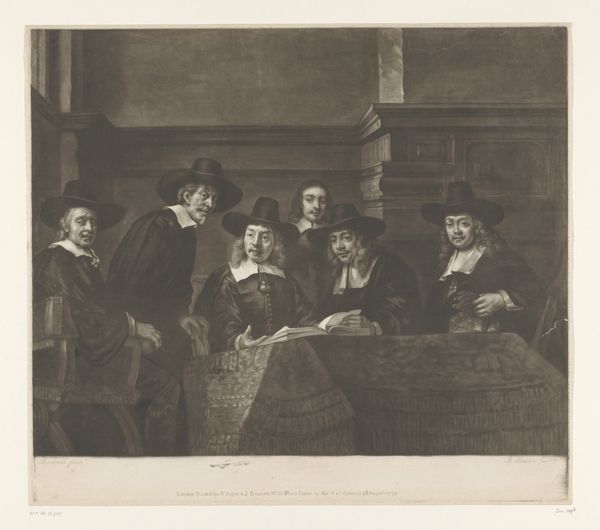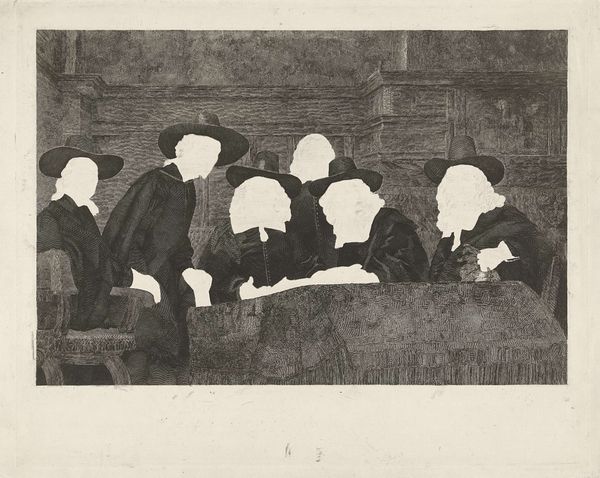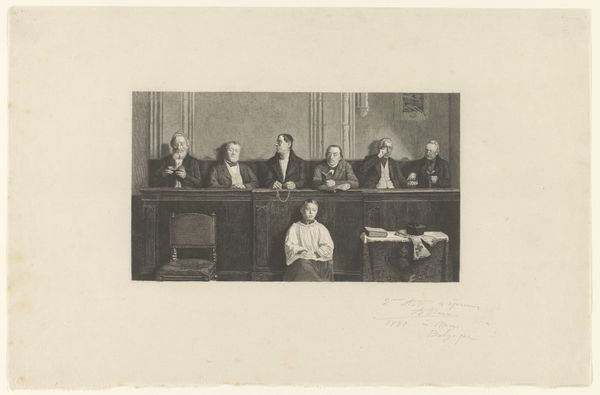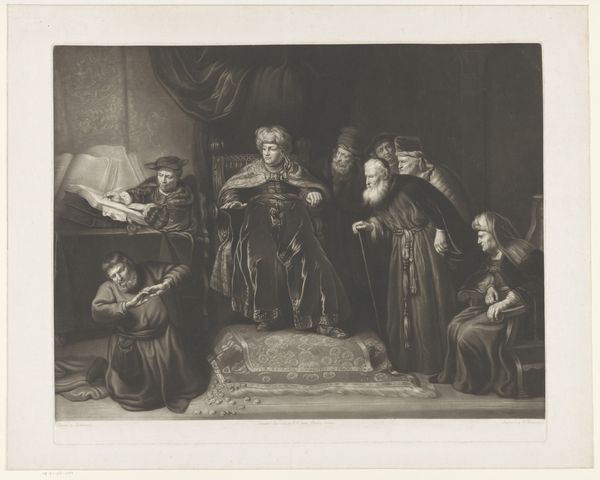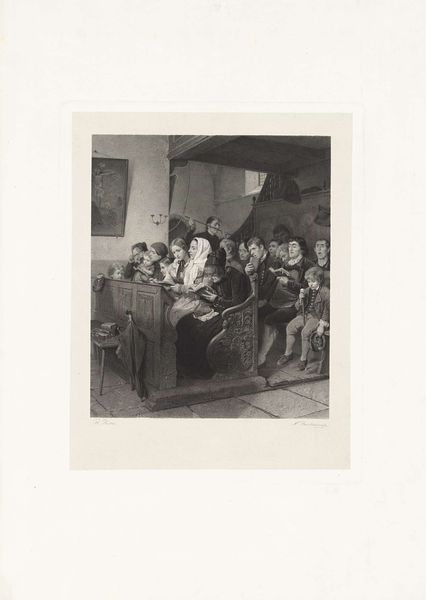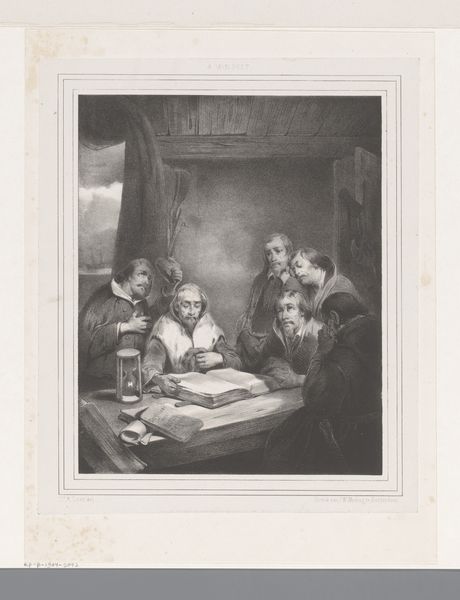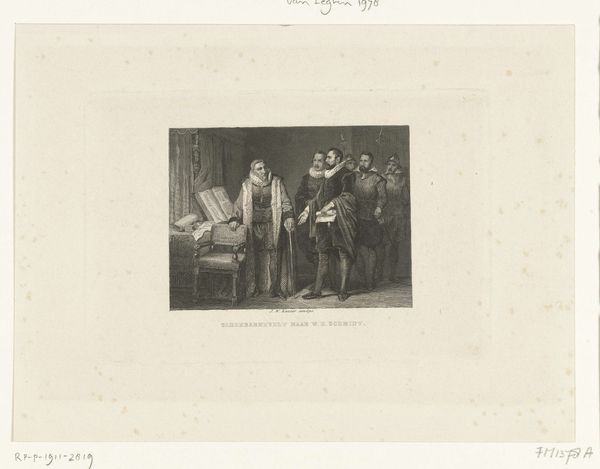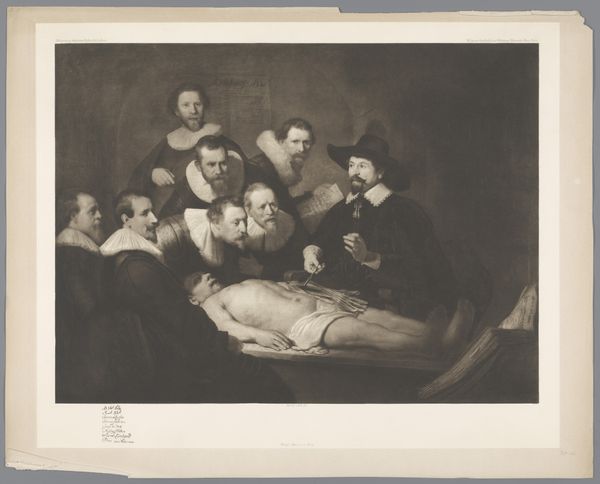
drawing, print, paper
#
portrait
#
drawing
# print
#
paper
#
genre-painting
#
tonal art
#
realism
Dimensions: Sheet: 14 15/16 × 17 15/16 in. (38 × 45.5 cm) Image: 10 3/16 × 15 1/16 in. (25.8 × 38.2 cm)
Copyright: Public Domain
Editor: We're looking at Léopold Flameng's "The Syndics," a print on paper from 1876. It’s currently held at the Metropolitan Museum of Art. The figures are so intensely focused, yet there's also this almost palpable stillness. How would you begin to interpret a piece like this? Curator: Let's consider the composition itself. Note the strong horizontal emphasis created by the table, grounding the figures. Observe how Flameng masterfully manipulates light and shadow to define form and direct the viewer’s eye. Are you drawn to any particular focal point? Editor: I keep coming back to the figure who seems to be leaning forward, almost breaking the plane of the image. His intense gaze is so direct. Curator: Precisely! This dynamic pose introduces a diagonal element, disrupting the strict horizontality and adding tension. Consider the contrast between his active posture and the relative stillness of the other figures. What effect does this contrast have on the overall reading of the image? Editor: It definitely pulls you in, makes you wonder what he's thinking. Are the other figures just as engrossed, or is he seeing something different? Curator: Exactly. Now, consider the tonal range - the gradations from light to dark. How do these contribute to the mood and sense of space within the image? Notice how Flameng uses this to model forms and create depth. Editor: It creates a really dramatic feel, almost theatrical. I hadn't noticed all the different elements at play until you pointed them out. Curator: Indeed. By examining these formal aspects, we gain insight into the artist's intentions and the expressive potential inherent in the medium itself. Editor: I see the value in focusing on those intrinsic qualities; it really changes how I perceive the work. Thanks!
Comments
No comments
Be the first to comment and join the conversation on the ultimate creative platform.
